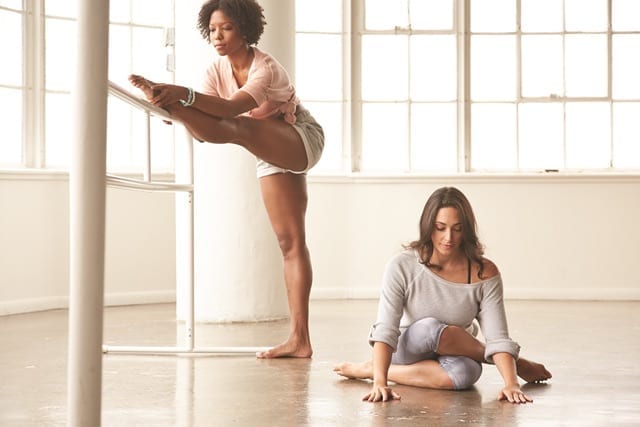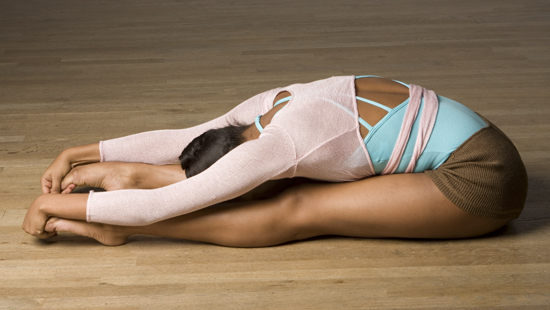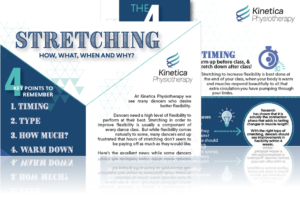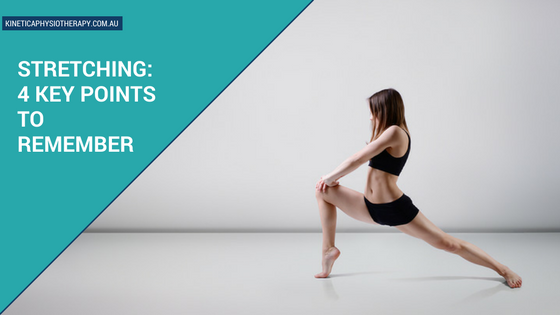
At Kinetica Physiotherapy, we see many dancers who desire better flexibility. Dancers need a high level of flexibility to perform at their best. Stretching in order to improve flexibility is usually a component of every dance class. But while flexibility comes naturally to some, many dancers end up frustrated that hours of stretching don’t seem to be paying off as much as they would like. Here’s the excellent news: while some dancers may always have to work a little harder than others to improve flexibility, there are some tricks to getting the most out of your stretching
Here’s the excellent news: while some dancers may always have to work a little harder than others to improve flexibility, there are some tricks to getting the most out of your stretching
program.
Let us share these with you.
1) Timing
Warm up before class, and stretch down after class! Stretching to increase flexibility is best done at the end of your class when your body is warm and muscles respond beautifully to all that extra circulation you have pumping through your limbs.
2) Type
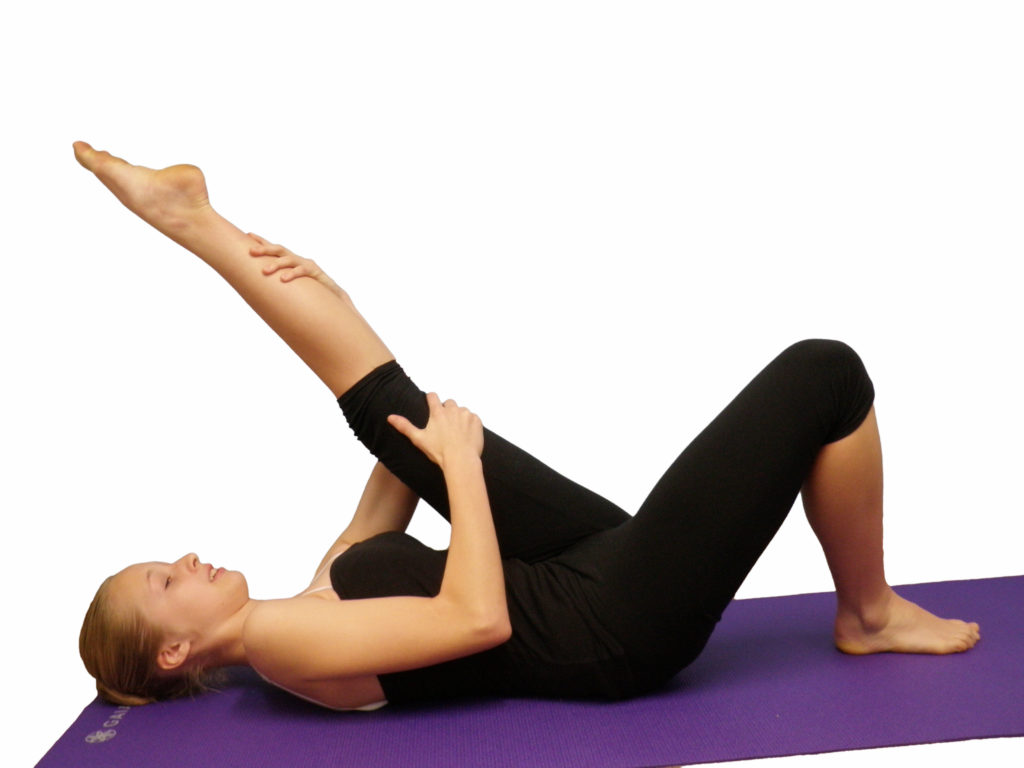
Incorporate contraction and relaxation phases to achieve a true increase in muscle length. Dancer’s should take the muscle to a point where they feel strain (not pain), then contract that muscle against resistance for several seconds and relax, the limb should be able to be moved further into the stretch. Researchers have shown that it is actually the contraction phase (in this lengthened position), not the stretching phase, that leads to lasting changes in muscle length (1). With the right type of stretching, improvements in flexibility should occur within 4 weeks for most dancers.
3) How much?
A recent study showed that 3 sets of 30 second stretches, 5 days per week for 4 weeks resulted in an average 21% improvement in hamstring extensibility (2). That amount of stretching should be more than achievable for most dancers!
4) Warm down following class
As well as stretching at the end of dance class, allowing the body to cool down slowly with an active warm down has also been shown to decrease the risk of injury, and improve recovery (3). 5-10 mins of reduced tempo class work or 5 mins of light barre exercise are good examples of an active warm down. Also, during winter, remember to encourage dancers to rug up before leaving your dance studio. With colder nights, it’s important to allow those tired muscles to cool gradually.
For boys
Working your muscles in a lengthened position will ensure that flexibility is maintained while also building strength. This should be a critical part of any strengthening program.
Be aware of growth spurts
While we expect our muscles to become more flexible with the below guidelines, keep in mind that muscles are likely to tighten slightly during growth spurts as they struggle to keep up with lengthening bones. You can persist with stretches during growth spurts so long as it isn’t painful. Take heart, eventually, your muscles will catch up.
Want to know more? Download our FREE Stretching Infographic here.
This article was originally featured in the July/Aug 2014 issue of Dancetrain Magazine.
References
- Aquino, C., Fonseca, S., Goncalves, G., Silva, P., Ocarino, J., & Mancini, M. (2010). Stretching vs. strength training in lengthened position in subjects with tight hamstring muscles: A randomised control trial. Manual Therapy, 15, 26-31
- Marshall, P., Cashman, A., & Cheema, B. (2011). A randomised controlled trial for the effect of passive stretching on measures of hamstring extensibility, passive stiffness, strength, and stretch tolerance. J Sci & Med in Sport, 14, 535-540
- Reilly, B., & Ekblom, T. (2005). The use of recovery methods post exercise. J of Sports Sciences, 23 (6), 619-627
Image Credits
- polebook.net
- rockettes.com
- Many thanks to Kate Kemp for helping us out with this image
- dancehq.co.uk
- dancemagazine.com
- discoverbirmingham.org
- rwsentosablog.com

